Mild weather here in Hawai‘i allows us to grow many crops I’d never even considered. How to grow bananas — what makes them happy, when to harvest — was one of our first lessons in island food crops.
JUMP TO:
- Intro: How to grow bananas
- What — exactly — is a banana tree?
- How do bananas grow?
- How tall do bananas get?
- What do growing bananas look like?
- Is it called a bunch or a hand?
- Water and soil needs
- Climate and exposure
- Growing bananas in containers
- Harvesting bananas
- What to do with bananas
- How to propagate bananas
New to gardening? Limited on space? The 5-Gallon Garden gives you the skills you need to grow food in the space you have. Get started with your garden today!
How to grow bananas
We found that growing bananas is easy if you can provide the kind of environment that they thrive in. Obviously, that is easier in some regions than others. If you’re interested in including something more exotic than zucchini and tomatoes in your vegetable garden, bananas might be worth considering if you can provide the environment they need.
Banana trees
First, let’s talk about what bananas are. Many people think bananas grow on banana trees. In actuality, though, bananas are an herbaceous perennial, not a tree. The ‘trunk’ of a banana does not become hard and woody like, say, an apple tree. The banana tree ‘trunk’ is more like a stem, and it’s very fleshy and full of moisture. Bananas grow on these fleshy trunks, sprouting from the top.
How do bananas grow?
A banana plant grows in layers, creating round after round as each leaf is formed and emerges from the center. As it grows, leaves brown and die off, but the layer of ‘trunk’ associated with that leaf remains. The banana tree stalk gets bigger in diameter as it grows.
Grow Some Greens!
Ready to grow fresh greens, no matter WHERE you live? Sign up for my
FREE quick-start guide and start growing some of your own food!
The stems of these ‘banana trees’ reach 8-12″ in diameter at maturity, depending upon the variety. Cut a banana tree down, and rings are visible inside, much like a hardwood tree. With bananas, though, the rings easily separate into “planks” that have a curve to them.
I’ve seen these used as plates at some events, and we use them as mulch material. Left to rot, the soft tissue of the banana breaks down and leaves behind long, fibrous strands that can be used for making rope.
How tall do bananas get?
There are many different varieties of bananas. Some grow quite tall, reaching 25′ or so in height. Others only get a few feet tall. We have a number of different varieties, but for ease of harvest, we prefer banana plants that stay under 10′ tall.
There’s no telling which way a really tall banana plant will lean, and a falling banana will topple everything in its path. That’s why we prefer the shorter varieties.
What do growing bananas look like?
Cartoonist Gary Larson caught flack years ago for his inaccurate depiction of bananas. I think it just goes to show that lots of people don’t know how bananas grow! The banana plant itself features large blade-shaped leaves that emerge from the central trunk, one at a time. An intact banana leaf has smooth edges, but strong winds can shred the edges so they look fringed.
When a banana plant is large enough to produce fruit, an oblong, reddish-brown blossom emerges from the center. The blossom is borne on a thick stem that bends toward the ground. As the blossom grows, reddish bracts curl up, each revealing a precisely formed row of florets, which will become bananas.
As the little bananas grow, bracts fall off and more layers of bananas emerge, each banana pointing not toward the ground as you might imagine, but toward the sky! It takes several months for a bunch of bananas to mature. As the banana bunch grows, it will become quite heavy, causing the banana tree to lean. You can help combat this by propping the bunch with a long board notched into a V at one end.
What’s a bunch of bananas?
It’s common for people to call the bananas you can get at the grocery store a ‘bunch’ of bananas. What you see below is what we call a bunch of bananas.
One bunch of bananas can weigh 40-60 pounds.
A hand of bananas is cut from a bunch, and that’s what you buy at the store.
Water & soil
Bananas are a thirsty crop. They’re good for growing in low, wet conditions. Some people plant them in gray water drainage areas. If you’re growing bananas in a container, you may need to water them a couple times a day. Mulching bananas regularly will help retain moisture and add nutrients to the soil.
When we harvest bananas, we often leave the stalk and leaves in place around the base of the stump to nourish the next crop, or use it as mulch.
Bananas thrive in rich, fertile soil. Amend the planting hole or pot with lots of compost. Aged chicken manure is an excellent addition, too.
Where do bananas grow — climate and exposure
- Bananas like a warm, humid environment. They thrive here where it rains year-round and temperatures rarely deviate from the 60-75 degree F range.
- If you’re in a region that has more dramatic temperatures — scorching hot summers and freezing winters — you’ll need to work at giving your banana plant what it needs.
- As you can imagine based on the high moisture content of the plant itself, bananas like lots of water.
- A bit of shade to filter the harsh sun during the hottest part of the day and protection from the cold in the winter are a must.
- The big leaves of bananas are easily damaged by winds. Situate them in a protected area to prevent this.
- In Hawaii, the banana growing season is pretty much year round, but we see a burst of activity in the late spring.
Growing bananas in containers
Not everyone has ideal outdoor conditions for growing bananas. While bananas grow so prolifically that they are a staple for us, in other regions homegrown bananas are probably going to be more of a novelty than a productive crop.
Kept trimmed, banana plants are pretty and will give a tropical feel to your patio, too. If you want to try growing bananas, you’ll need a large container in which to plant them. A half oak barrel would be a good size.
Opt for a dwarf variety that will stay small.
- Viente Cohol is a small, fast fruiting variety.
- Dwarf Red is another to consider, though it can take a few years to begin fruiting.
- Dwarf Cavendish is a small banana plant bearing the variety of banana you know from the grocery store.
Growing bananas in containers means that you can move the banana plant indoors into a warmer sunroom or greenhouse when the temperature drops.
When to harvest bananas
Bananas should be harvested when they are still green. Allowed to ripen on the plant, they are still edible, but since individual bananas tend to ripen at different rates, you’ll have some ripening while others are still green.
Ripe bananas are more prone to damage when harvesting whole banana trees, and they tend to attract birds and rats who enjoy them as much as we do.
There are several clues to tell if green bananas are ready to be harvested. It’s not necessary to see all of these happen at once.
- The individual bananas have lost their sharp edges, taking on a ‘full’ look.
- The remaining blossom (no longer producing fruit) hangs 1′-2′ below the large bunch of bananas.
- The entire top of the banana plant dies off.
It can take a newly planted banana about 18 months to produce a crop. More established plants can produce in 12 months or so.
Note that the time required for bananas to mature varies based on external conditions.
Harvesting bananas
Here’s the thing that might surprise you about harvesting bananas:
Each stalk only bears one bunch of bananas. When a bunch is ripe, the entire banana plant is cut down. But all is not lost, friends. New shoots will appear from the base of mature banana stems. This can happen while the banana plant is still growing, or after it’s been cut down.
These are often referred to as keiki, as they are banana babies.
How to harvest bananas
The first step to harvesting bananas is to put on work clothes. Banana sap looks clear, but it will turn dark brown and stain clothing as it dries. Be mindful of where you set freshly cut bananas, as they will drip and stain surfaces.
Sap will splatter.
There are a couple of ways to take down a banana tree. We always try to do it slowly, but the weight of the bananas and the dense tree often makes that impossible, especially if it’s a taller variety.
One tactic for a slow fall is to use a length of rebar and a hammer. Pound the rebar into the banana stalk several times at the same level. The idea is to weaken the stalk so that is slowly bends toward the ground, until you can easily remove the bunch from the stalk.
A sharp machete is the best way to cut through a banana stalk. A couple of sharp whacks with a sharp machete will usually do it. This will drop a banana tree more quickly.
Don’t try to catch or slow down a falling banana stalk. They’re heavy!
When we were learning how to grow bananas, we were taught to cut the banana tree about four or five feet above the ground. Because banana plants are so full of moisture, leaving the tall stump in place means the moisture in the stalk will benefit and nourish the remaining roots.
What to do with that big bunch of bananas
We find that the easiest way to handle big bunches of bananas is to hang them while they ripen. Cutting them into hands takes time and then we’d have to find somewhere to set them all. Hanging them outside in a shaded area allows them to ripen.
Since they tend to ripen over the course of several days, we can simply grab bananas to eat right from the hanging bunch. When all of the bananas have ripened and we can’t eat them fast enough, it’s time to dehydrate bananas, make banana bread, or banana muffins.
Propagating bananas — are there banana seeds??
Now that you know how to grow bananas, you might want to go a step further and propagate bananas. Unlike annual vegetable crops, you’re not going to find banana seeds at the local nursery.
The easiest way to start a new banana plant is to separate a keiki — also known as suckers or pups — from a growing banana tree. (Keiki actually means child in the Hawaiian language. ) These sprout from the base of banana stumps. Left in place, they’ll grow large, eventually making a banana bunch of their own.
Imagine a single banana stalk sending out four or five suckers, and how big that stand of bananas will get as the suckers grow. If you have the space, you can allow those suckers to grow and produce. Or you can use a sharp shovel to cut the keiki from the parent plant by inserting the blade down into the ground between the keiki and the banana stalk, collecting a portion of the root.
Transplant this root in a new location or share it with a friend.
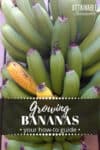
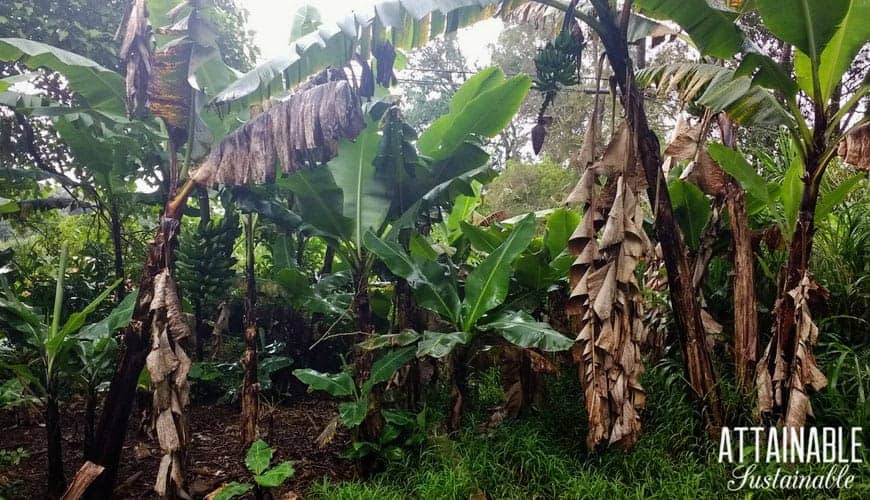

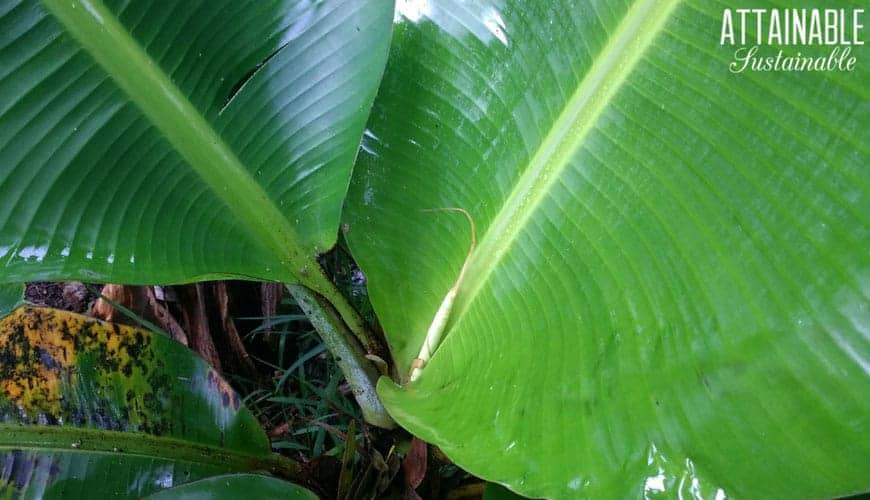
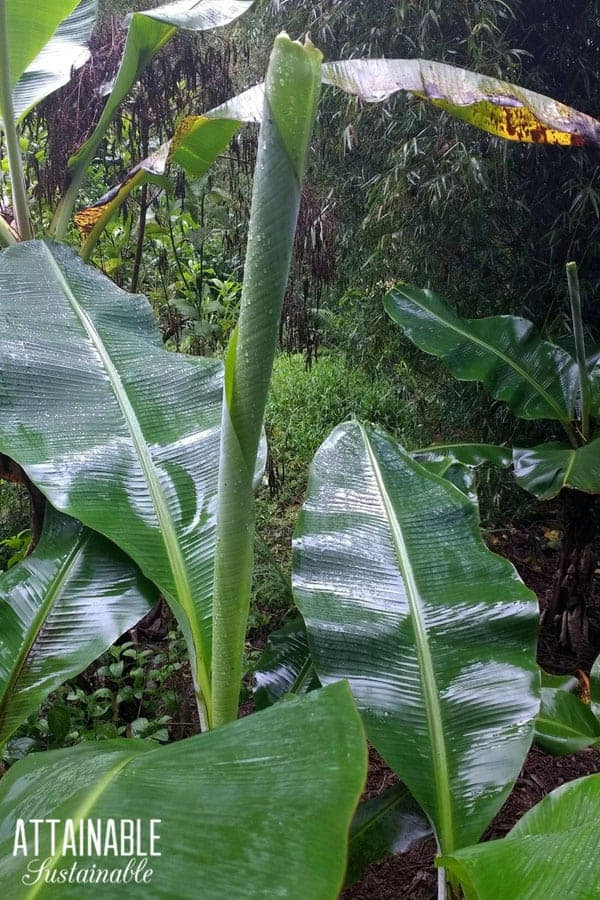
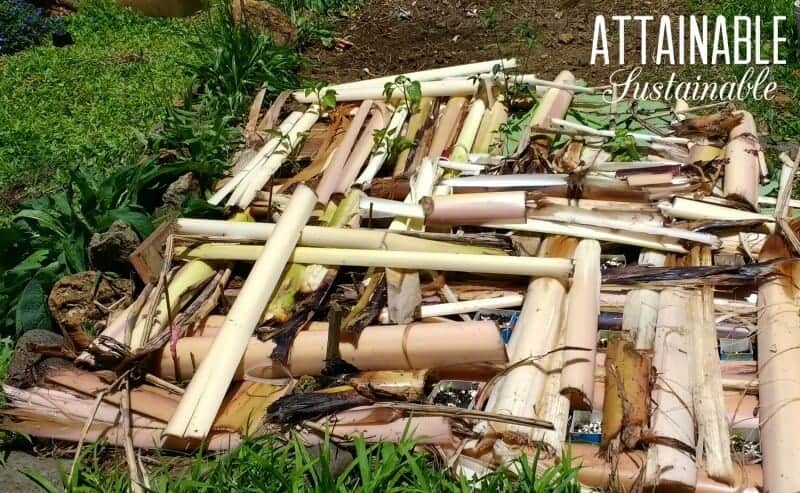
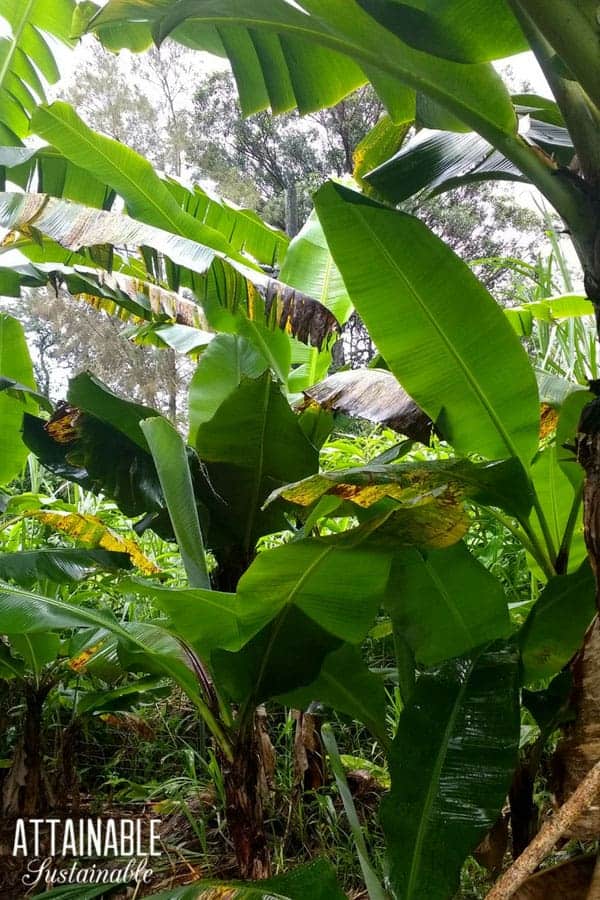
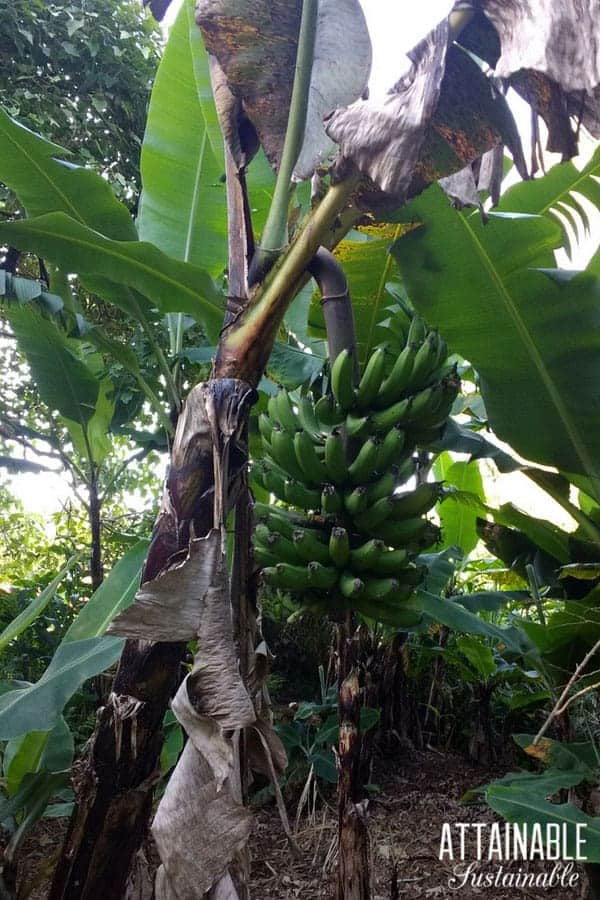
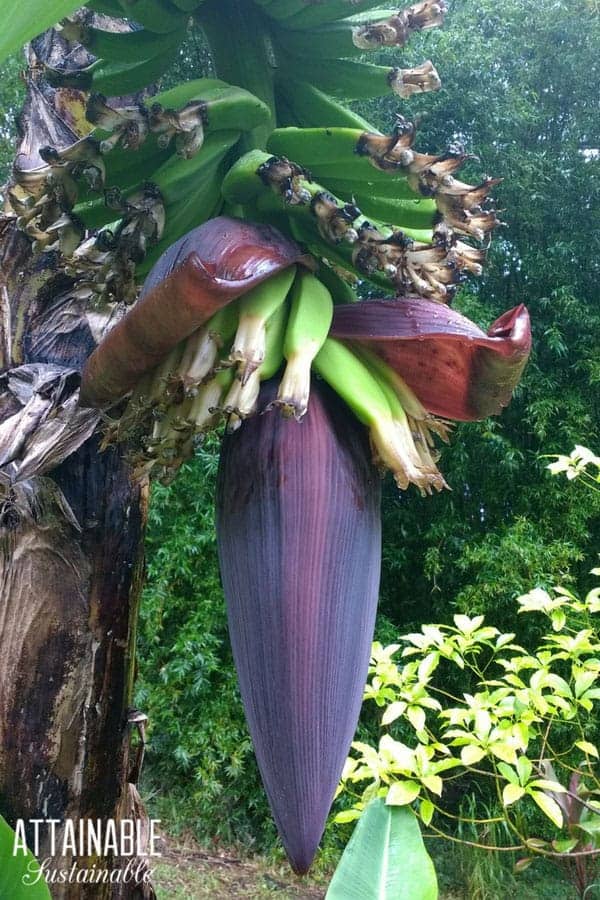
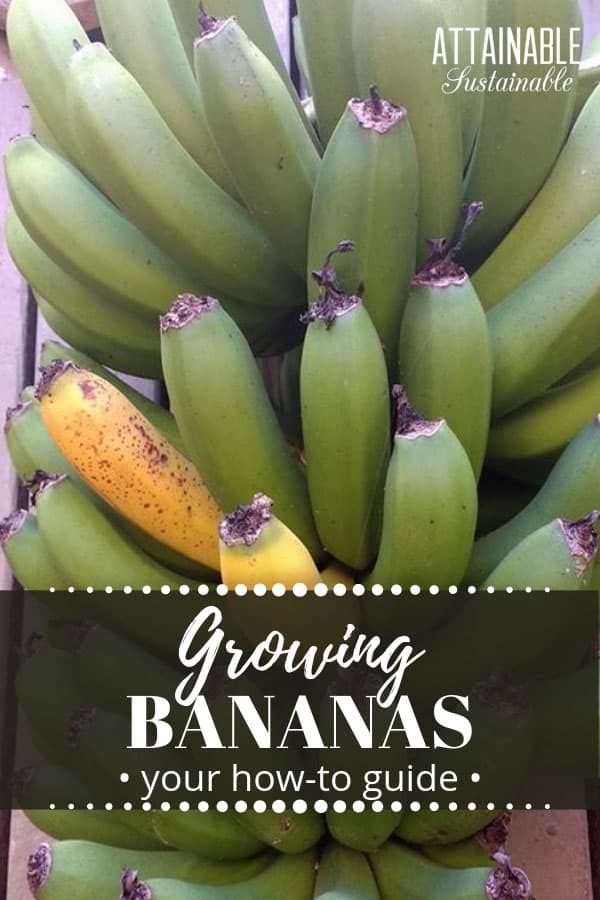
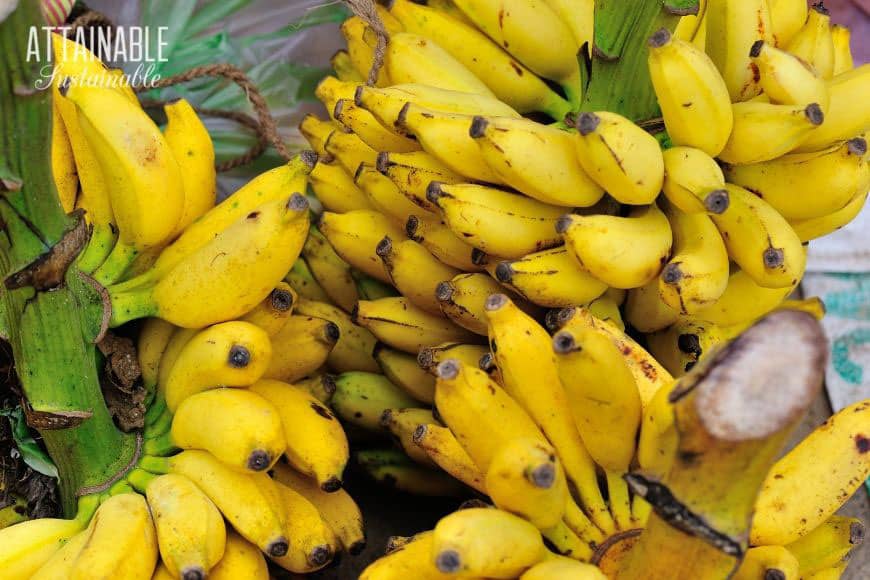
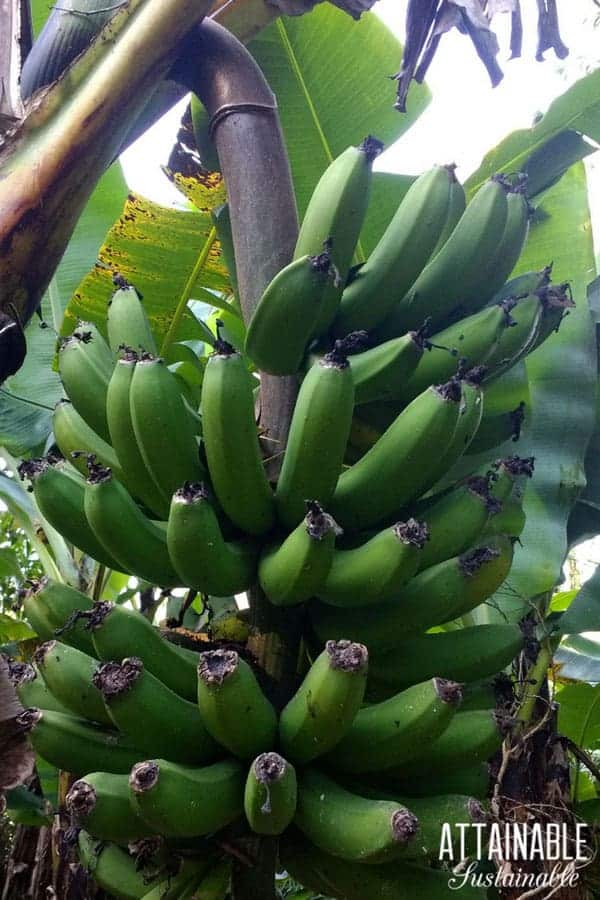
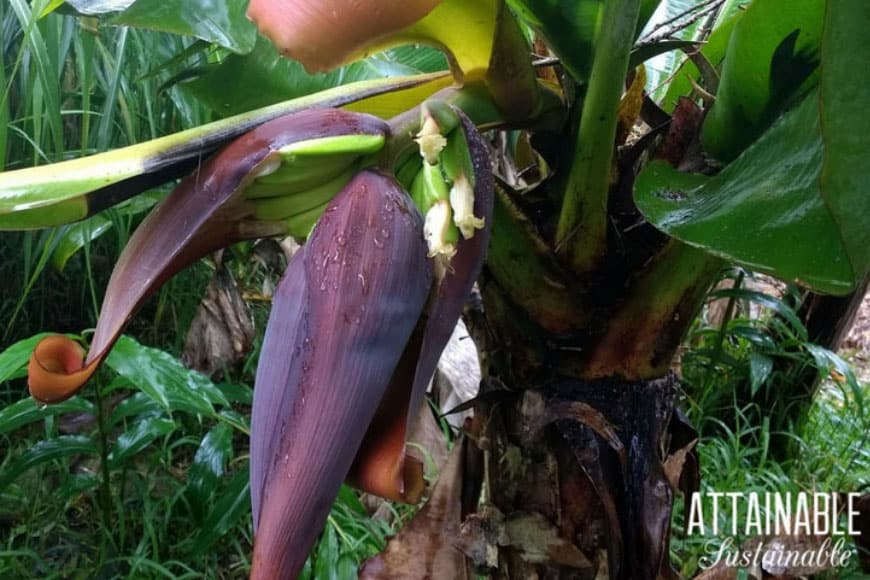
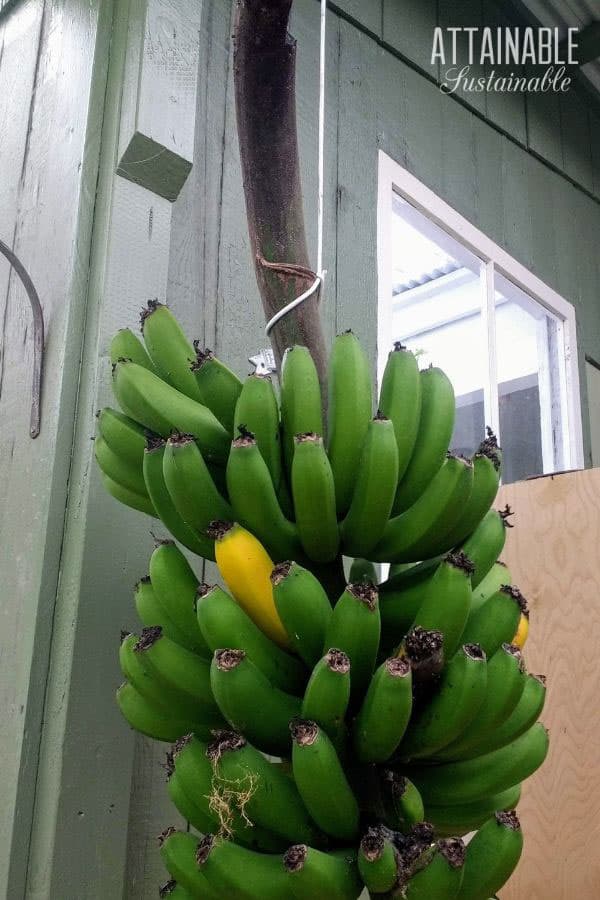
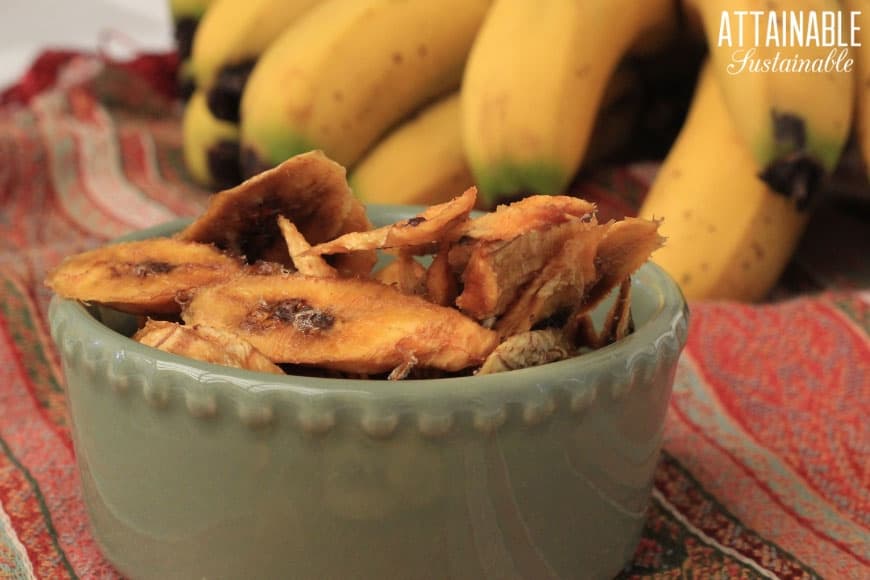
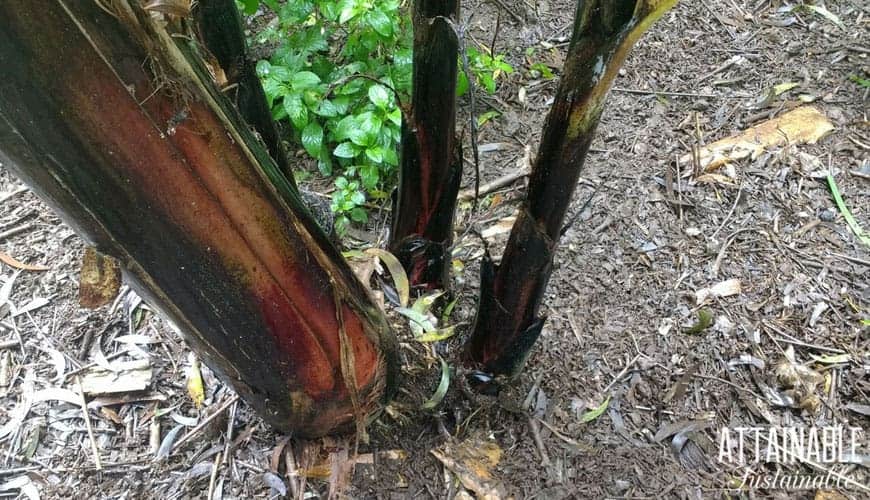





What is the big red bud that grows from the long stalk at the bottom of a whole bunch of bananas? Is that the seed you would plant to grow another tree?
It’s the blossom. Tiny bananas emerge from each layer. Bananas are not generally grown from seed.
I would like to grow a banana tree with full sized bananas..where can i get or order one? Also I saw the picture with the banana fruit in a pot of soil..can you start a banana plant that way?
Banana fruit in a pot of soil will likely just rot. As for where to get a plant, I’d ask your local nursery or try a Google search.
I’m in Georgia. We have five hands this year, the most, ever.
Is it wise to remove the blossom if , say, there are five little bananas then nothing for almost a foot of stem. Will those little guys do better without the remains of the flower?
Yes, when new fruit is no longer developing, we cut off the blossom end.
What are the best types of fertilizers to keep the banana plants most healthy?
I like to use compost.
I grow bananas in my backyard garden in Goa, west coast of India. I face two problems. The bunch of bananas produced is less than the large bunches one sees in photos and around. Secondly, the weight of the bunch bends the top of the banana plant and this curtails the development of the bananas. My banana plant tends to grow high, about three metres. Please tell me what I should do.
My banana trees do bend and sometimes fall with the weight of the fruit. Not sure on the *size of the bananas. Try compost around the base of the plant?
Looking for banana seeds is that available special in MARYLAND USA please REPLY. Thankyou
As stated in the post, bananas aren’t really grown from seed.
Ornamental bananas are cute too!
If you do not have the space to keep the stump of the parent plant as well as allow two suckers to grow and produce, do you cut the stump of the parent plant leaving the sucker to become the new parent?
Cutting the parent plant down removes it entirely. It won’t regrow. Does that make sense? The keiki/suckers will become the new “parent.”